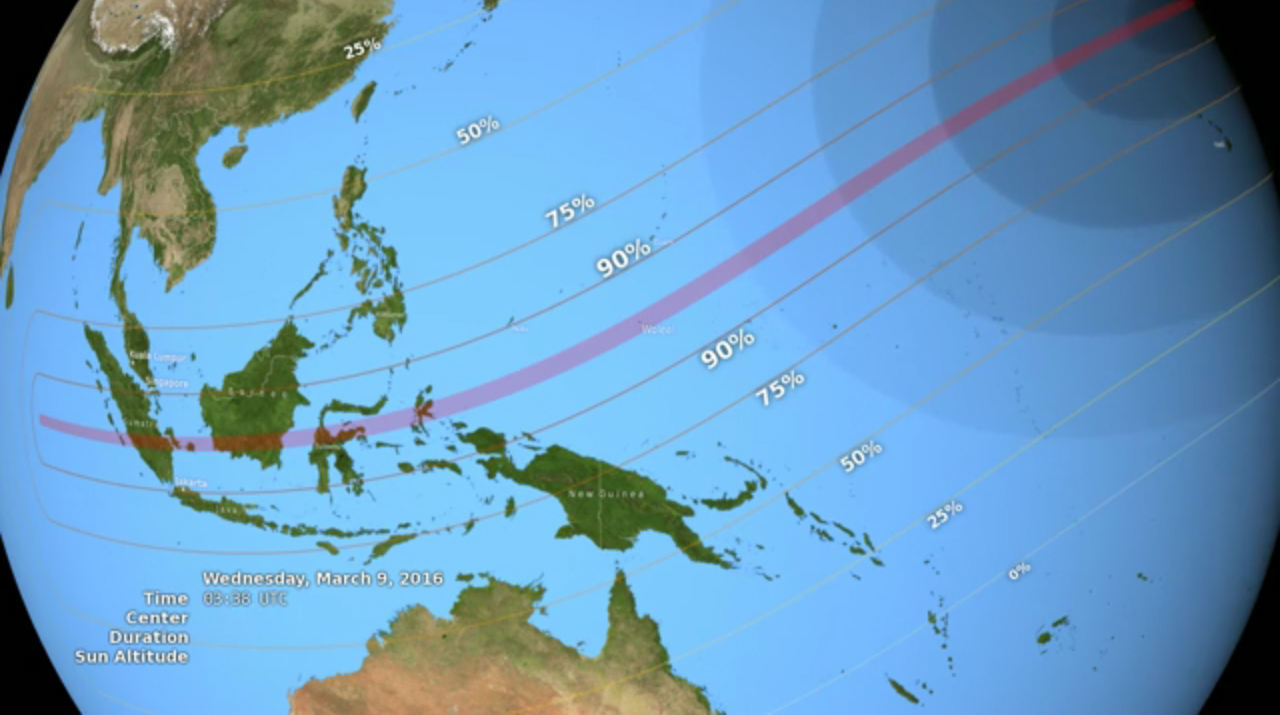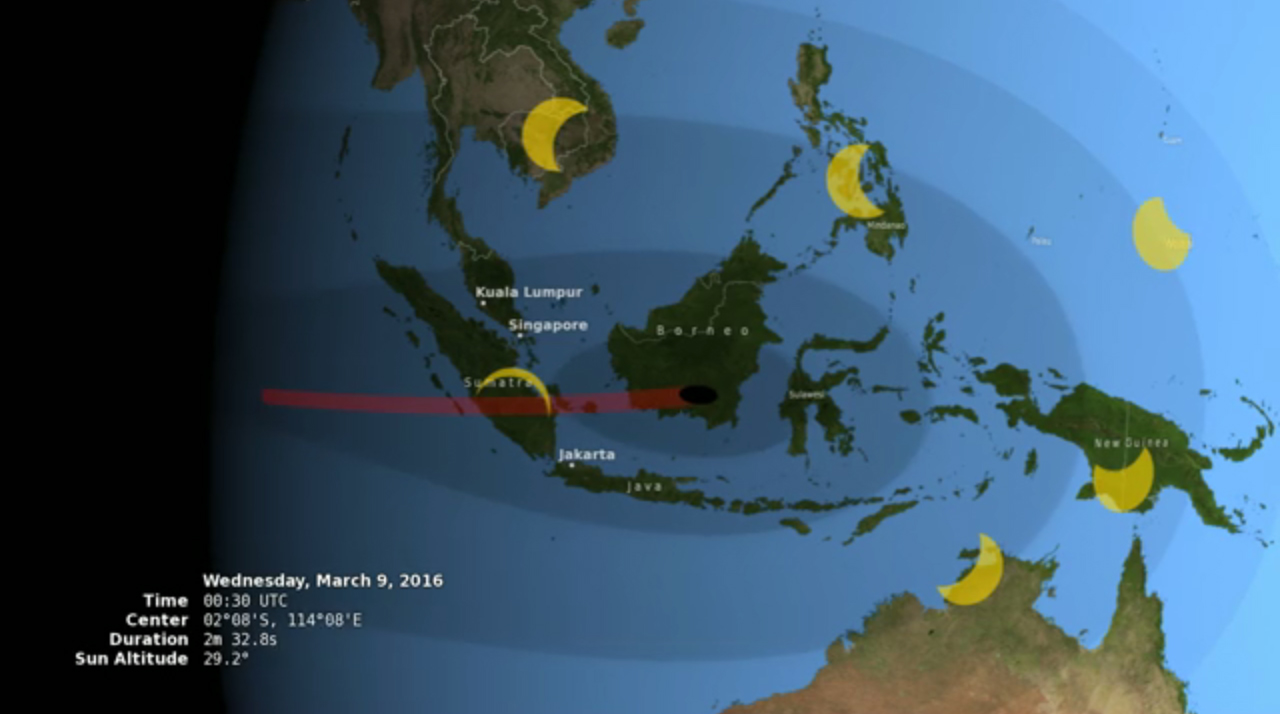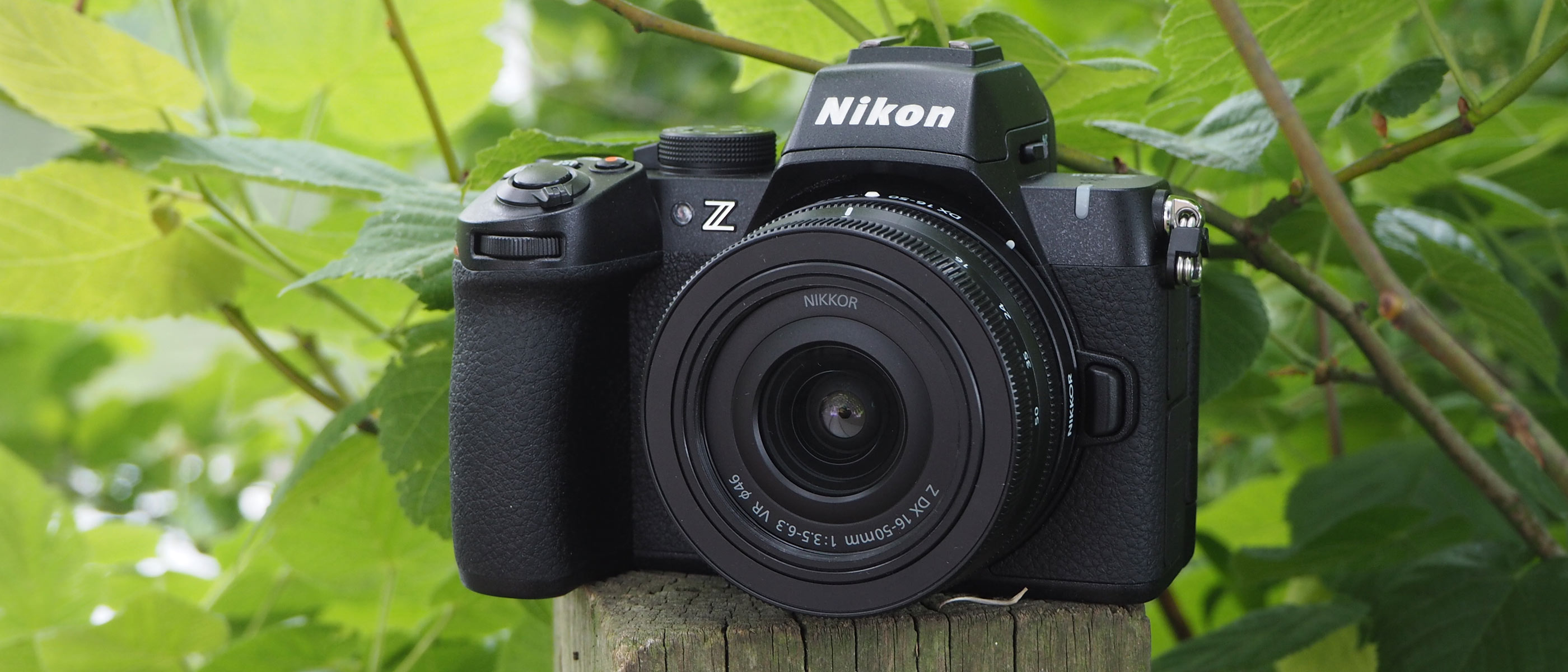Total Solar Eclipse Today: Slooh's 'StarShare Camera' Lets You Share Photos

You don't have to visit Indonesia to photograph the total eclipse of the sun today (March 8).
Though the "path of totality" for today's solar eclipse is limited to islands in Southeast Asia and the Pacific Ocean region, you can watch the celestial event online live via the Slooh Community Observatory beginning at 6 p.m. EST (2300 GMT), or here at Space.com, courtesy of Slooh. (It will be Wednesday, March 9 local time for eclipse viewers in Indonesia.)
People can also capture and share eclipse images on their favorite social media sites using Slooh's recently launched StarShare Camera. [The Total Solar Eclipse of 2016 Explained]
"This will be the first major show [in which the StarShare Camera] has been available to the public, and so we are excited to give the public the ability to take and share photos via social media, which will draw more people to the event," Slooh founder Mike Paolucci told Space.com via email.
"It is our intention to drive as many people as possible worldwide to share this moment of wonder together, toward our mission of celebrating mankind's common cause under a shared sky," Paolucci added.
Since its inception in 2002, Sloohhas offered people around the world the opportunity to see real-time, online views of celestial objects and events captured by professional-grade telescopes. Recently, Slooh unveiled its StarShare Camera, which allows viewers to snap and share photographs of such observations. The software interacts with various telescope feeds, converting the image types into Web footage that casual astronomers can enjoy.
"The images that come out of StarShare will be superior as a result of the expertise of the people using the equipment, the high quality of the equipment being used at the best locations and the resolution of the imagery," Paolucci said.
Breaking space news, the latest updates on rocket launches, skywatching events and more!
For today's eclipse, Slooh will waive the charge normally required to access the StarShare camera, allowing visitors to capture unlimited photos and time-lapse creations, he added.
"All we ask is that they share the heck out of them!" Paolucci said.
For today's event, Slooh will have feeds lined up from Hawaii to Indonesia. Some feeds will capture the total solar eclipse, while others will offer a view of a partial eclipse. The various angles provide redundancy in case weather blocks one or more sites and also allow viewers to grasp what is happening over the course of the event, Slooh representatives said.
Although live observers of the solar eclipse should remember to don eye protection, Slooh's viewers will not need to take such precautions.
You can find Slooh's StarShare Camera on Slooh's total solar eclipse webcast feed here: https://live.slooh.com/stadium/live/slooh-live.
Editor's note: If you safely capture an amazing photo of the March 8 total solar eclipse and would like to share it with us and our news partners for a story or gallery, send images and comments to managing editor Tariq Malik at spacephotos@space.com. (This article was edited to clarify the correct local time of the eclipse.)
Follow Nola Taylor Redd on Twitter @NolaTRedd or Google+. Follow us at @Spacedotcom, Facebook or Google+. Originally published on Space.com.

Nola Taylor Tillman is a contributing writer for Space.com. She loves all things space and astronomy-related, and always wants to learn more. She has a Bachelor's degree in English and Astrophysics from Agnes Scott College and served as an intern at Sky & Telescope magazine. She loves to speak to groups on astronomy-related subjects. She lives with her husband in Atlanta, Georgia. Follow her on Bluesky at @astrowriter.social.bluesky

